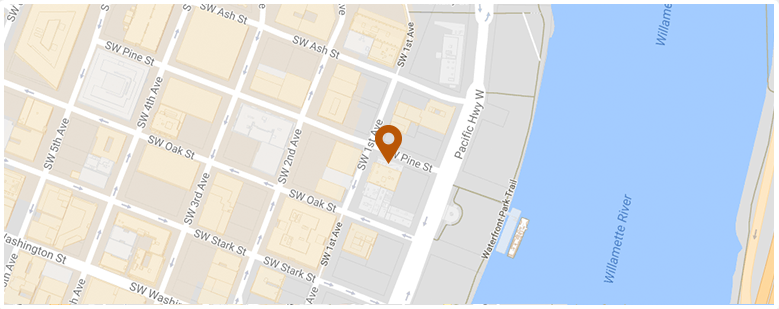Two articles published last month in The Oregonian should be drawing our attention to safety issues for pedestrians on Portland’s streets.
Earlier this week the newspaper reported that “more than one-quarter of the pedestrians killed on Portland streets during the last five years were 65 years or older, according to city figures.” It notes that this represents “a dramatic increase from levels seen in recent years.” This followed an article earlier in the month that detailed a rise in traffic deaths in the city even as numbers are falling statewide.
The data related to deaths among elderly pedestrians is particularly alarming. The newspaper writes that roughly 12 percent of Portland’s population is age 65 or older, yet people in this age group account for 16 percent of overall traffic deaths and a shocking 26 percent of pedestrian fatalities. Critically, this is not a short-term anomaly. Those numbers cover the four-and-a-half year period beginning in January 2015, a time-frame during which the city says it has been actively working to reduce traffic fatalities, especially among pedestrians and cyclists. The article also notes that since 2010 more elderly Portlanders “died walking (28) than while driving or in a motor vehicle (23).”
The newspaper adds: “The city’s analysis comes as Portland recently matched the traffic death toll from all of 2018 – 34 people – in a little less than seven months.” For a city that is part of the nationwide Vision Zero initiative, and which hopes to eliminate all traffic deaths by 2025, this is clearly disturbing news. The newspaper quotes a spokesperson for AARP saying “Our streets need to serve everyone… Aging in place can be a wonderful option, but it becomes much harder when people must navigate wide, fast streets that lack convenient and safe crosswalks.”
With all of the attention that has recently been focused on cyclist safety at both the city and state level, these statistics are a reminder not just that pedestrians matter too but that some pedestrians have more challenges than others. The newspaper also notes that city officials believe the current trend toward larger SUVs has also contributed to the problem.
One bit of relief that Oregon offers to pedestrians in situations like these involves insurance. Oregon law allows a pedestrian who is hit by a vehicle to collect benefits under the Personal Injury Protection (PIP) section of the pedestrian’s car insurance policy. If the victim does not have car insurance (for example, if she is a child or, perhaps, an elderly person who no longer drives) then the driver’s PIP policy must cover at least some of the lost wages and medical expenses arising from the accident, regardless of who is at fault.
As a Portland attorney I have often used this space to remind readers of the rights and protections pedestrians and cyclists enjoy under Chapter 811 of the Oregon Revised Statutes. Titled “Rules of the Road for Drivers” this outlines in detail the responsibilities every driver has vis-à-vis cyclists and pedestrians as well as toward fellow drivers. The very first section of Chapter 811 (ORS 811.005) reminds drivers that they have responsibilities that go beyond the letter of the law, noting that “none of the provisions of the vehicle code… relieve a driver from the duty to exercise due care concerning pedestrians.”
What, then, can be done? The Oregonian notes that the city has lowered the speed limit to 20 mph in all residential areas “as well as 121 miles of other streets” but that this year’s legislative session refused to grant the city authority to lower speed limits “on larger streets citywide.”
We should not dismiss out of hand the city’s efforts to slow drivers down while making crosswalks safer for everyone, but the numbers published by the newspaper clearly show that we, as a community, have a long way to go. More rigorous enforcement must be part of this. Our courts – both civil and criminal – also play a key role in enforcing accountability. Ultimately we need to move past seeing cars and pedestrians as fundamentally opposed to one another. Every one of us spends time both in a car (whether as driver or passenger) and as a pedestrian. Cooperation in the name of safety is in our own individual interests, as well as the broader interests of Portland as a community.
The Oregonian: More pedestrians 65 and older are dying on Portland streets, city analysis says
The Oregonian: Portland traffic deaths spike through first half of 2019 while statewide fatalities dip
The Oregonian: Pedestrian and Cyclist Deaths by Year 2008-2014
Portland Bureau of Transportation: Vision Zero
 Oregon Injury Lawyer Blog
Oregon Injury Lawyer Blog


